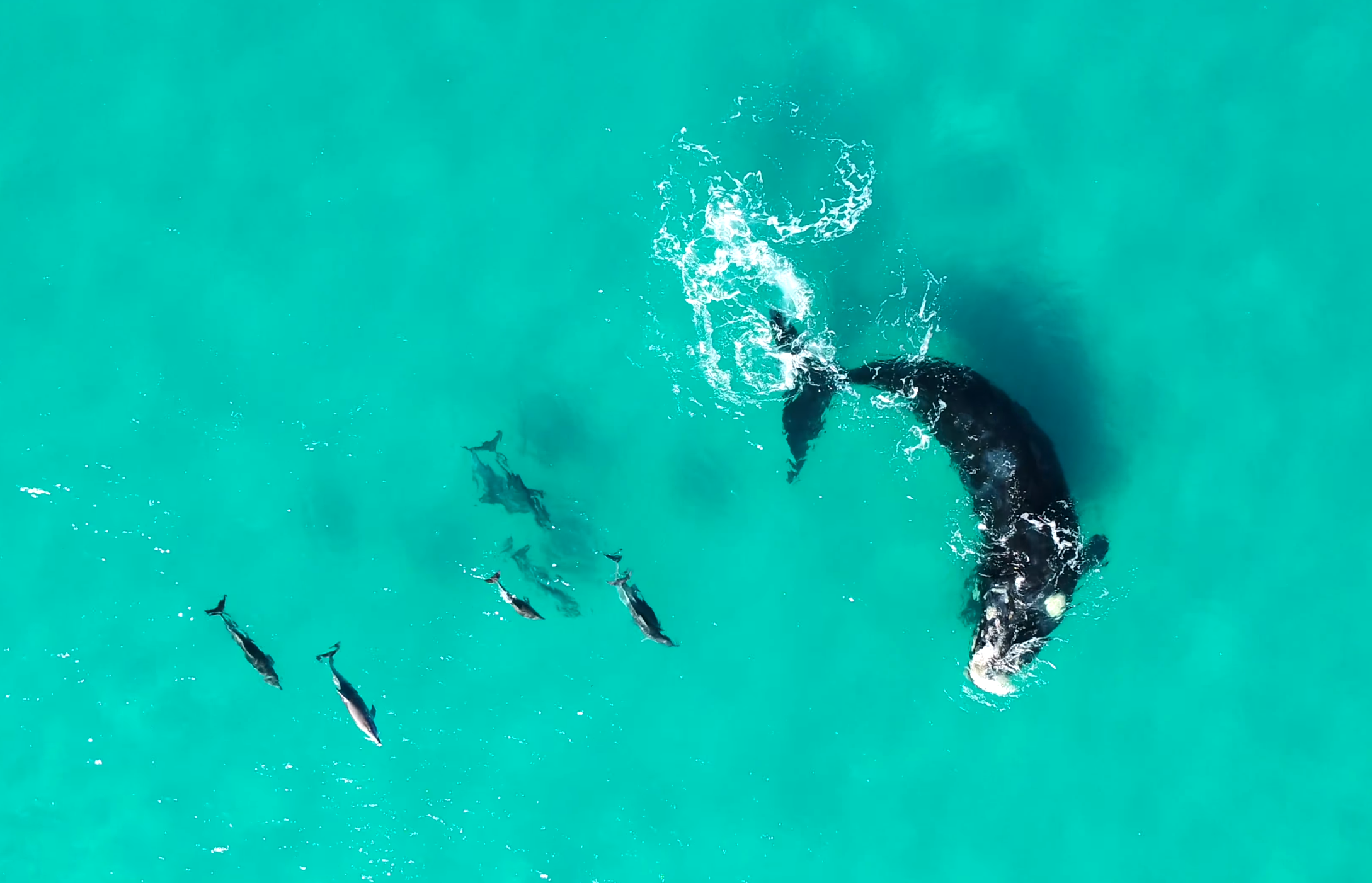Researchers have documented dozens of playful interactions between whales and dolphins across oceans, highlighting a previously unknown form of marine mammal behaviour.
The research, published in the journal Discover Animals, investigated hundreds of videos and images taken by members of the public, tourism operators, and scientists to better understand playful behaviour among whales and dolphins.
In all, Australia researchers analysed 19 whale and dolphin species involved in 199 separate and unrelated interactions at 17 locations around the world.
They found a quarter of the interactions could be defined as mutually playful. “In particular for humpback whales, we found that for one-third of the events the behavioural responses towards the dolphins appear positive,” Olaf Meynecke, an author of the study, said.
“The humpback whales were rolling from side to side, undertaking belly presentation and other behaviours that are associated with courtship or friendly socialising.”
In each of the observed interactions, researchers noted the location, date and time, species and number of animals involved, age class, and position of the dolphins in relation to the whale’s main body parts.
They found that whale species responded differently to dolphin behaviour.

The documented interactions involved 425 baleen whales from six species. Humpback whales accounted for 68 per cent of the interactions, grey whales 16 per cent, and fin whales 7 per cent.
Of the 1,570 dolphins observed, 51 per cent were bottlenose dolphins, 17 per cent common dolphins and 15 per cent Pacific wide-sided dolphins, the study noted.
Researchers also documented the reactions and responses of whales since dolphins sometimes harassed and annoyed them.
“Whales also strategically moved slowly in the direction of the dolphins with their head and rostrum,” Dr Meynecke said. “The vast majority of the observed interactions did not show avoidance behaviour.”
Researchers observed that the common whale-dolphin interaction involved dolphins swimming near the whale’s rostrum – or the beak – akin to bow riding, likely indicating a form of one-sided play by dolphins.
Two videos also showed bottlenose dolphins following humpback whales not only on the surface but also to the ocean floor, where they continued engaging in close quarters, including what seemed like touching and social play.
“While social play is cooperative and reciprocal, there is also one-sided play or interaction, with only one participant perceiving the interaction as playful, as seen in cases of teasing or harassment by dolphins during feeding events,” Dr Meynecke said.
Researchers hope the findings can serve as a foundation for future studies into the complex social structures of marine ecosystems and inter-species interactions.



